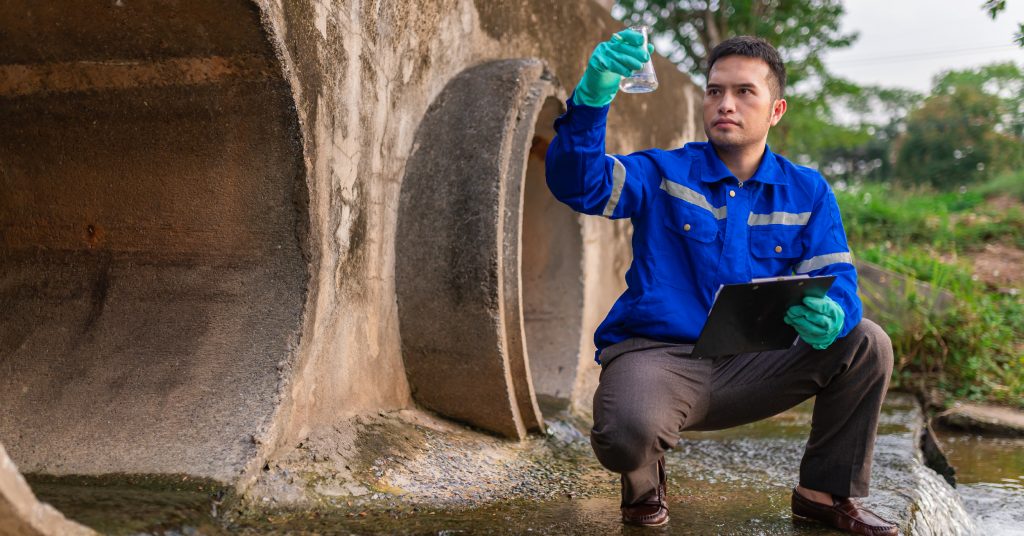Bore water, widely used for residential, agricultural, and industrial purposes, often contains elevated levels of iron and manganese. These naturally occurring elements, when present in excess, can cause discoloration, staining, unpleasant odors, and potential health concerns. Understanding how to remove iron from bore water is vital to improving its quality and usability.
This guide explores effective methods to address this issue, discusses techniques to remove iron and manganese from water, and provides insights into reducing iron content in bore water for better performance and safety.
Table of Contents
ToggleWhy Is Iron in Bore Water a Problem?
Iron in bore water exists primarily in two forms: soluble ferrous iron and insoluble ferric iron. While small amounts of iron are not harmful, excessive levels can lead to significant challenges, such as:
- Staining: Rust-colored stains on plumbing fixtures, laundry, and surfaces.
- Clogging: Build-up in pipes, pumps, and water systems, reducing efficiency.
- Bad Odor and Taste: A metallic taste and unpleasant odor in drinking water.
- Health Concerns: Long-term exposure to high iron levels can lead to digestive issues and other health risks.
Assessing Iron and Manganese Levels in Bore Water
Before implementing any treatment, it is essential to test the water and determine the concentrations of iron and manganese. Both are common in bore water and often coexist, necessitating targeted removal methods.
- Iron Levels: Levels above 0.3 mg/L are considered problematic.
- Manganese Levels: Safe levels are below 0.05 mg/L; anything higher requires treatment.
Methods to Remove Iron from Bore Water
Various methods are available to effectively address high iron levels in bore water. Below are the most common techniques:
- Oxidation and Filtration
This method involves oxidizing dissolved iron to convert it into an insoluble form for easy filtration.
– Aeration: Exposing water to air oxidizes ferrous iron into ferric iron, which can then be filtered out.
– Chemical Oxidants: Substances like chlorine, potassium permanganate, or ozone can oxidize both iron and manganese for efficient filtration.
- Water Softening
Ion exchange water softeners remove ferrous iron by replacing it with sodium or potassium ions. This method is suitable for low iron concentrations but less effective for high levels.
- Sedimentation
For water with high particulate iron, allowing the particles to settle in a sedimentation tank before filtration can be an economical solution.
- Specialized Iron Removal Filters
Filters using media like manganese greensand, zeolite, or Birm are effective for domestic and small-scale applications.
–Manganese Greensand Filters: Ideal for simultaneous removal of iron and manganese.
–Birm Filters: Work best when dissolved oxygen is present in the water.
- Reverse Osmosis
For bore water with multiple contaminants, reverse osmosis (RO) systems offer a complete solution, effectively reducing iron, manganese, and other impurities to ensure high-quality water.
Benefits of Removing Iron and Manganese from Bore Water
Addressing iron and manganese levels in bore water offers numerous advantages:
- Improved Water Quality: Clear, odor-free water with better taste.
- Protection of Plumbing Systems: Reduced risk of corrosion and damage to pipes and equipment.
- Enhanced Aesthetic Appeal: Prevention of stains on laundry, fixtures, and surfaces.
- Health Safety: Compliance with safe drinking water standards.
- Increased System Efficiency: Avoidance of blockages and improved water flow.
Challenges in Removing Iron from Bore Water
While effective, the process of removing iron from bore water presents some challenges:
- High Initial Costs: Advanced systems like reverse osmosis and specialized filters can require significant investment.
- Maintenance Requirements: Regular servicing is essential to maintain system efficiency.
- Variable Water Chemistry: Fluctuations in iron and manganese levels necessitate adaptable treatment solutions.
Ion Exchange: Enhancing Water Quality Effectively
Ion Exchange offers premium INDION water softener resins designed for diverse water treatment applications, including softening, deionization, and dealkalization. Manufactured in automated, ISO 9001 and 14001 certified facilities, these resins are known for their low rinse volumes, high capacity, and extended lifespan, making them a preferred choice for reliable performance. With a proven track record, INDION resins cater to a wide range of needs, such as mixed bed polishing, condensate polishing, removal of organics and color, oil removal in effluent treatment, and other specialty applications, delivering exceptional water quality across industries.
Conclusion
Iron and manganese in bore water can cause a range of issues, from discoloration and clogging to unpleasant odors and potential health risks. By understanding how to remove iron from bore water and employing effective methods like oxidation, filtration, and reverse osmosis, you can significantly improve water quality. Whether for residential, agricultural, or industrial use, addressing high iron levels in bore water ensures reliable, clean, and high-quality water.







